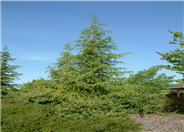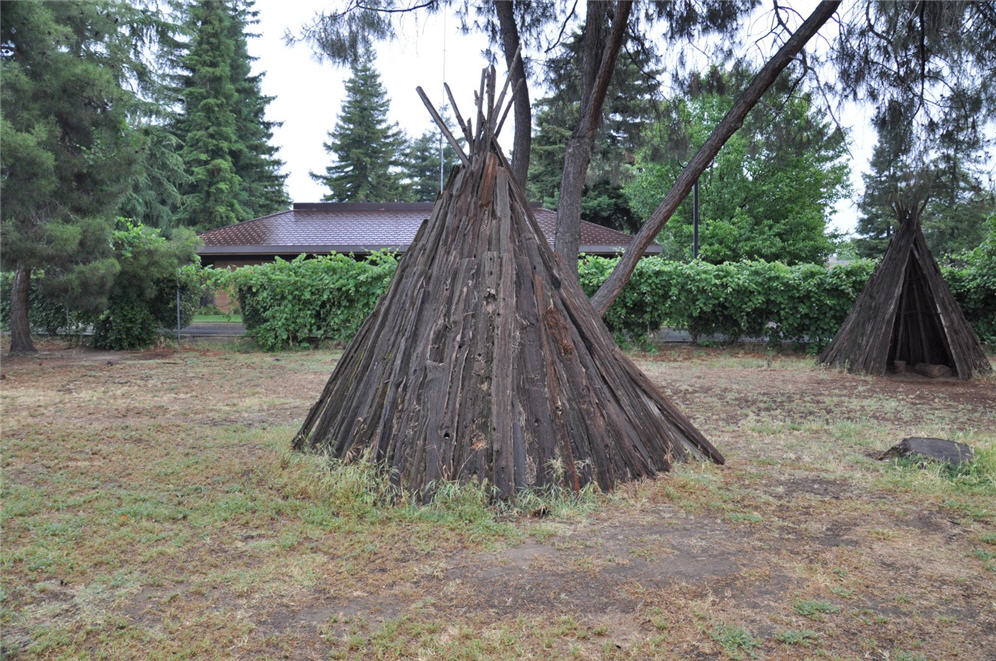
Common name:Canary Island Pine
Botanical name:Pinus canariensis
This graceful, slender-growing pine has a pyramidal form, reaching 50'-70' tall. Its needles are 12" long and drooping in bundles of 3. The foliage is a blue-green color, maturing to a dark green shade. Needles do drop periodically, creating litter. Flowers are insignificant. Cones appear in the spring.

Common name:Coast Redwood, Redwood
Botanical name:Sequoia sempervirens
This fast-growing, aromatic tree has soft, dark green foliage with long needles appearing in flat sprays and brown, barrel-shaped cones that appear after 1 year. Its soft, red-brown bark is fiberous and furrowed. Particularly after mechanical damage, this tree will stump sprout to form new, young trees around the stump. Avoid planting in areas of high foot traffic. Inadequate moisture or a hot, dry site will inhibit its growth.

Common name:California Wild Grape
Botanical name:Vitis californica
The California Wild Grape is a woody deciduous vine with round large leaves. Small fragrant blooms appear in spring and berry clusters appear in the summer. This vine has sprawling , climbing growth habit. The California Wild grape is native to CA. It prefers full sun and well draining soil with regular watering.

Common name:Deodar Cedar
Botanical name:Cedrus deodara
This fast-growing, coniferous evergreen is capable of reaching a size of 80' high by 40' wide. Its needles are a light, silvery green color, 2" long. Flowers are inconspicuous. Barrel shaped cones appear in fall and winter. Branches are pendulous and spreadings. Plant in area that has ample room for growth.

Common name:Silver Maple, Soft or White Maple
Botanical name:Acer saccharinum
This fast-growing, equally spreading tree can reach heights of 40-100'. Leaves of 3"-6" in width are five-lobed, with a light green top color and silvery color beneath. The fall color is a mixture of scarlet, orange and yellow. With an aggressive root system, this tree can be hard on sidewalks and sewers. It is, however, one of the best trees for poor soils where few other trees will grow.
| Designer: Cooperative Extension | Tipis |
Photographer: GardenSoft |
Soils and Compost:
Practice grass-cycling by leaving short grass clippings on lawns after mowing, so that nutrients and organic matter are returned to the soil.
Water Saving Tip:
Change spray sprinklers to low-flow bubbler or drip systems. Shrubs and trees are ideal candidates for this type of irrigation because the water is applied directly to the root zones.
Integrated Pest Management:
Attract, or buy beneficial insects such as ladybugs and lacewings to control pest outbreaks in your garden.
